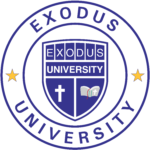One of the keys to success in the education market is discovering the needs of students. This means thinking about different age groups, languages, and accessibility. Schools can tailor events to accommodate a diverse student population, whether they are learning a second language or need a more specialized course. Moreover, they can integrate event registration data with marketing automation platforms or school CRM software. This ensures that they target the right audience at the right time.
The research analyzed the marketing activities of vocational schools in a municipality. In this way, the schools competed for students. The research used a qualitative design, with data collected from interviews with school leaders, regional education authorities, and civil society stakeholders. The study also included an analysis of promotional materials. Findings indicate that marketing played a marginal role in the school leaders’ management activities and that they approached marketing in a non-systematic way.


Universities are sometimes resistant to thinking of themselves as businesses, but advances in technology and culture have made this easier. Some have begun hiring marketers with the same mindset as businesses. But the university still faces significant challenges, such as analyzing data, which is often done in silos due to the university structure. The most effective strategy for solving these problems is a combination of qualitative and quantitative methods. The primary aim of market scanning is to understand student needs. The information that is gathered from this research will help higher education institutions to create programs that meet student needs and minimize program costs.
The research also identifies mediating factors and motivations. Hence, the study identifies contextual factors that influence school responses to competitive incentives. It also identifies the motivations and rationales behind school responses to market pressures. In the context of competitive incentives, schools will improve their educational quality to attract demand and maintain their market position in the market. This is an essential part of the theory of change in the educational market.


One of the benefits of educational marketing is that it is easy to produce and combines well with marketing. Unlike traditional marketing methods, educational content resonates with consumers better. It also costs 62 percent less than traditional marketing. Furthermore, if a customer is genuinely interested in learning more, they are more likely to buy a product. This method has proven to be effective for decades, and many organizations have already begun experimenting with it.
Check our academic programs here.






